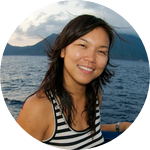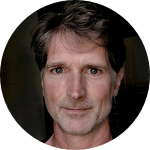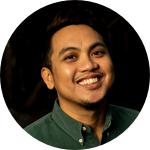About This Project
HAB (harmful algal bloom/red tide) is a public health concern. Here, we are interested in the interaction of algae & viruses which can play a role in a bloom crash. We will utilize a low-cost flow camera (PlanktoScope) to identify the dominant species & a low-cost foldable microscope (FoldScope) for outreach. We envision that the synergy of fundamental science and outreach components will enhance community participation and build capacity to monitor HABs.
Ask the Scientists
Join The DiscussionWhat is the context of this research?
Bolinao red tide (Philippines) is largely due to intensive fish farming that leads to limited flushing and high nutrients — perfect conditions for a bloom. Mariculture started in the 1970s, intensified in 1995, and since the 2000s, there have been HAB (harmful algal bloom) or red tide recurrences. When the red tide algae die it consumes oxygen which can result in fish kills. It's not only the algae that live in these waters but other microbes and viruses as well, that can either sustain or infect them. This study is designed to monitor and understand the interaction of the red tide algae with microbes and more importantly viruses using low-cost microscopy and sequencing. This is part of a collaborative effort to monitor and mitigate HABs in the Philippines.
What is the significance of this project?
Several physical and chemical triggers of harmful algal blooms (HABs) are known; however, we have little knowledge of the effects of biotic factors such as viruses on blooms. Here, we will perform low-cost microscopy and sequencing to determine the identity and role of microbes and viruses in bloom initiation and crash. Ultimately, this project will benefit the local community by contributing to larger, collaborative efforts to monitor, predict, and manage HABs by serving as a component of an early warning system. Developing and field-testing the low-cost tools can build not only technical capacity in this resource-limited environment but will allow people to appreciate and understand the invisible microbial world.
What are the goals of the project?
There are three goals for this project.
First, establish a list of microbes and viruses associated with red tide species. More importantly, insights into when and what conditions these organisms proliferate.
Second, generate genomics resources which will be deposited to a public repository such as the US NCBI. This will give insights into the metabolic capacity of these organisms and will serve as a springboard for new research such as drugs discovery, natural products, and new host-virus defense mechanisms.
Third, perform two community outreach within the existing network of Bolinao Marine Laboratory: (1) For the local monitoring and regulatory agencies to introduce the low-cost tools (2) For education purposes with aquaculture farmers, students, and community members.
Budget
This is part of a larger project that examines the spatial and temporal dynamics of red tide algae, bacteria, archaea, and viruses in Bolinao, Philippines. I received a National Geographic Early Career Grant to cover some of the expenses. The NatGeo funds will go to transportation, lodging, equipment, and chemical supplies. What I'm requesting here is to build a low-cost flow camera (PlanktoScope) that will allow real-time monitoring of algae/phytoplankton. The real-time data on what species are in bloom will allow targeted sampling and analysis.
Endorsed by
 Project Timeline
Project Timeline
Two intensive field samplings will be done (Nov-Dec 2021 & Apr-May 2022), which loosely corresponds to two monsoon seasons and the yearly reoccurrence of Bolinao HABs. After sampling, lab analysis and sequencing will commence. Community outreach and local government unit meeting are scheduled for July 2022.
Oct 13, 2021
Project Launched
Dec 19, 2021
Finished 1st fieldwork in Bolinao, Philippines
Feb 27, 2022
Lab analysis and sequencing (1st fieldwork)
May 26, 2022
Finished 2nd fieldwork in Bolinao, Philippines
Jun 25, 2022
Lab analysis and sequencing (2nd fieldwork)
Meet the Team
Team Bio
The team is composed of researchers from the University of Hawaii at Manoa and University of the Philippines Diliman.
Andrian "Adi" Gajigan
Andrian Gajigan is a biochemist and oceanographer. His research interests span from the molecular level to ocean scale processes. This includes microbial oceanography, marine virology, genomics, and gene regulation. He has participated in several expeditions in the Atlantic and the Pacific Ocean. Previously, Gajigan contributed to a larger effort to develop an early predictive system for harmful algal blooms (HABs, aka red tide). In his work, he outlined a microRNA-mediated mechanism that allows corals to adapt to heat stress. He also described the diversity and community structure of microbes in different regions in the Philippine seas.
Gajigan earned his BS in Biochemistry and MS in Marine Science at the University of the Philippines. He is currently based in Honolulu, pursuing his PhD in Oceanography at the University of Hawai‘i at Mānoa, focusing on phytoplankton viruses.
Project Backers
- 31Backers
- 100%Funded
- $6,512Total Donations
- $210.06Average Donation


